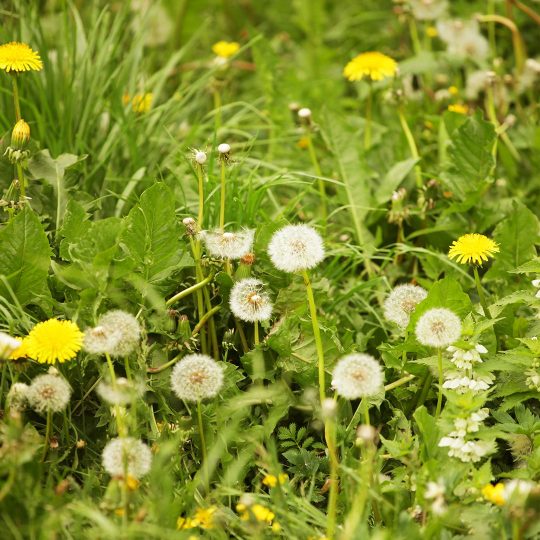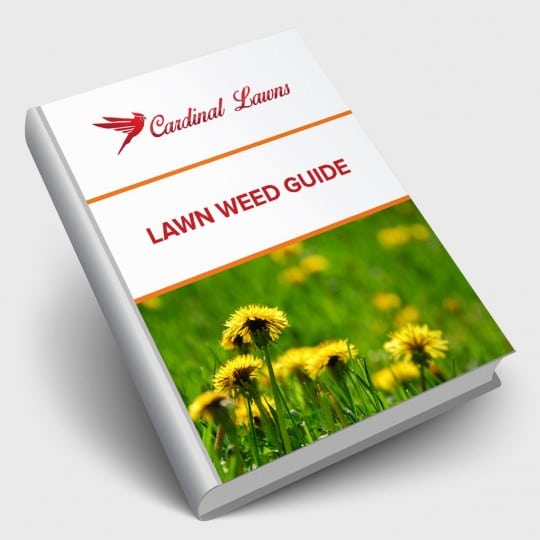Identifying Common Lawn Weeds in Ohio
Determining How to Get Rid of Them
Posted
April 10, 2025

Certain plants grow naturally across lawns and landscapes around Ohio. Some homeowners don’t mind them creeping through the garden and flowering for pollinators. However, if you don’t want these plants around, they’re known as weeds. The key to controlling weeds is proper identification. Here are some of the most common lawn weeds found in Ohio and how to get rid of them.
Identifying Common Ohio Lawn Weeds
Different plants, including weeds, thrive in different conditions, such as shady spots or damp soil. Weeds often take over when there’s no other grass or plants to compete with. The following weeds are common to Ohio because of the weather conditions and soil types. Identifying these weeds is the first step to controlling their spread throughout your lawn and garden.
- Bittercress. An annual winter weed with light to medium green stems and small white flowers.
- Black Medic. Annual summer weed with three clover-like leaflets and tiny yellow flowers that appear from May through September. May be a sign of poor soil conditions.
- Buckhorn Plantain. Perennial weed with long slender, spiked leaves that can be found in both wet and dry soils during the summer and early fall.
- Chickweed. Annual weed with tiny, oval, pointed leaves and white flowers. Prefers damp, cool areas.
- Crabgrass. Grassy weed with wide, flat leaf blades that spread across the ground from one central root. Prominent in late spring.
- Dandelion. Broadleaf weed with yellow flowers that transform into a puff of white seeds. Grow in all soil conditions and can survive cold winters.
- Ground Ivy. Perennial creeping weed with round, scalloped-edged leaves that grow in damp, fertile soil.
- Knotweed. Annual weed with slender wiry stems and narrow, blue-green, oval-shaped leaves. Could be a sign of compacted soil.
- Nutsedge. Perennial grassy weed with a cross-sectioned root system and nut-shaped tubers.
- Oxails. Perennial weed with heart-shaped leaflets and yellow flowers.
- Purslane. Resilient, low-lying creeping annual weed with round, reddish stems and paddle-shaped leaves.
- Speedwell. Creeping annual weed with round, scalloped leaves and blue or purple flowers. Prefers moist soil and shade.
- Spurge. Annual weed with flat, mat-like growth and splotchy purple leaves that appear in early spring.
- Thistle. Perennial weed with long, spiny leaves that show up in the summer.
- White Clover. Adaptive weed with three egg-shaped leaf stems and white flowers. Could be a sign of weak grass.
- Wild Violet. Perennial weed with heart-shaped, serrated leaves that grow in clumps and bloom white or purple flowers in early spring. Prefers shady, damp areas.
Once you’ve identified the weeds, you’ll be able to pick the right control method, since different products depend on the type of plant you’re trying to remove. Plus, you can use the plant preferences to get a better idea of soil conditions and work to correct them to prevent future weed problems.
Weed Control Methods
One of the best ways to control weeds is to prevent them from popping up in the first place. This requires aerating to combat compacted soil and proper watering, fertilizing, and mowing techniques. Establishing a healthy lawn helps the grass grow stronger and thicker, crowding out any weeds.
However, sometimes weed seeds are transferred to your lawn by wind, water, and wildlife. There are spot treatments that target specific weeds and widespread control methods you can apply to your entire lawn. But your best bet for controlling the spread of weeds is to get rid of them at the first signs.
Contact Cardinal Lawns for more information on the types of weeds that appear around your lawn and garden. As Ohio lawn care specialists, we can quickly identify what weeds you’re dealing with and help you plan effective control methods. Call 614-808-4446 today to get started.

Download Your FREE Lawn Weed Guide
Before weeds take over your yard this season, learn to identify and prevent them in the first place. Keep your lawn looking great all year!